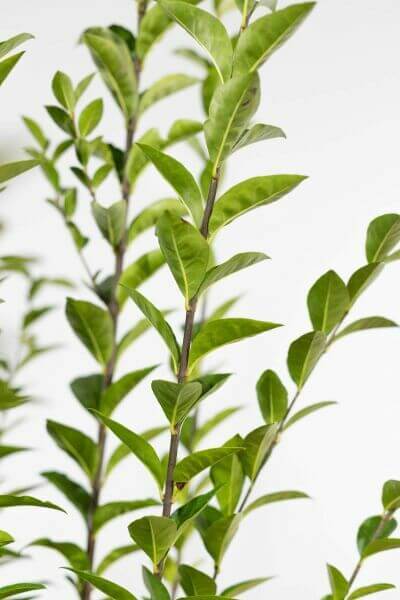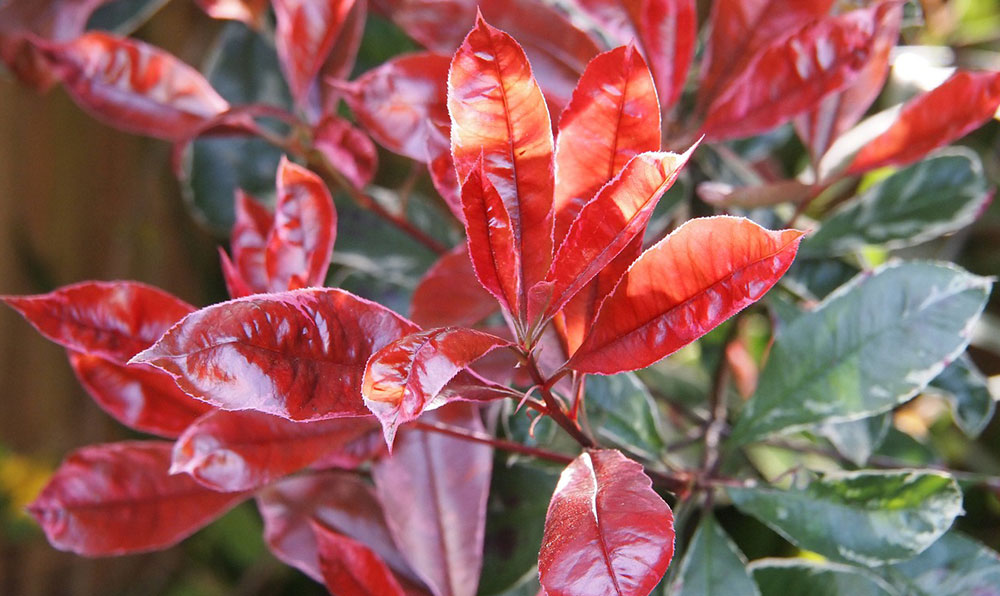Hedge Plants For Rustic Gardens
Hedge Plants For Rustic Gardens
Blog Article
Hedge Plants For Formal Gardens
Enhance your garden's allure with rich hedge varieties such as Yew (Taxus), Thuja, Laurel, Photinia, and Bamboo, commemorated for their structural integrity and ecological advantages.
Yew and Thuja provide evergreen protection and winter durability, while Laurel uses rapid growth and broad, aromatic leaves.
Photinia adds seasonal appeal with its lively red foliage, and Bamboo lends a low-maintenance, peaceful atmosphere.
These hedges improve air quality, decrease sound, and develop tranquil, private areas.
Proper planting, spacing, and maintenance guarantee energetic growth and environmental consistency.
Explore how these rich ranges can elevate your garden's appeal and well-being.
Secret Takeaways
Change Your Garden With Lush Hedge Ranges
- Select Yew for its dense, evergreen development and unrivaled longevity.
- Select Laurel for its fast growth and broad leaves, making sure fast privacy.
- Choose Photinia for its dynamic seasonal foliage, which turns a striking dark red.
- Use Bamboo for a low-maintenance, winter-hardy hedge with visual appeal.
- Area plants 2-3 per meter and prune routinely for optimum development and health.
Popular Hedge Plants
When changing a garden with lush hedge varieties, it's important to consider popular hedge plants such as Yew, Thuja, Laurel, and Photinia due to their distinct qualities and advantages.
Yew (Taxus) is highly esteemed for its longevity and thick, green development, making it a prime option for withstanding landscapes.
Thuja is noted for its evergreen foliage and robust winter season strength.
Photinia adds seasonal vibrancy with red leaves that darken gradually, developing vibrant visual appeal.
Laurel uses quick development and aromatic, broad leaves, suitable for quick privacy.
Furthermore, Bamboo is an excellent choice for atmosphere, using a low-maintenance, winter-hardy choice that improves the garden's aesthetic with its elegant, swaying canes.
These choices accommodate a variety of horticultural needs and choices.
Benefits of Garden Hedges
Garden hedges offer a multitude of advantages, making them an important addition to any landscape. These natural barriers are affordable to carry out and offer significant wind protection, boosting air flow and contributing to sound reduction. The dense foliage of hedges like Thuja and Beech ensures privacy by blocking presence, developing a remote and peaceful environment.
Hedges also play a vital function in microclimate policy, providing a steady environment that promotes plant development and decreases temperature level fluctuations. Their intricate leaf structures filter contaminants, enhancing air quality and contributing to a much healthier garden community.
Additionally, hedges master sound reduction, soaking up and deflecting sound waves to lower ambient sound levels. This dual performance of supplying both visual and acoustic personal privacy enhances the general tranquility and aesthetic appeal of any garden.
Planting and Upkeep Tips
For a successful hedge, precise preparation of the planting area is vital. Guarantee the soil has correct pH and drainage to support strong root development.
Area the plants properly for the picked species. Water the hedge often during its preliminary development phase, adjusting as required with seasonal modifications.
Implement a methodical bug control and disease prevention technique, utilizing natural or chemical treatments when required. Routinely check for aphids, termites, and fungal infections.
Apply mulch to retain moisture and reduce weeds. Seasonal pruning promotes thick development and air circulation, essential for plant health.
Following these guidelines will help you cultivate a dynamic, properly maintained hedge that boosts the appeal of your garden.
Spacing and Cutting Standards
Spacing and Trimming Standards
Appropriate spacing and cutting are important for cultivating healthy, aesthetically appealing hedges. Appropriate spacing makes sure each plant gets enough nutrients, light, and air flow.
Follow these standards for ideal hedge maintenance:
- Spacing: Position hedge plants 2-3 plants per meter to encourage robust growth.
- Pruning Techniques: Routine pruning is necessary for keeping preferred hedge height and shape. Cut new growth in summer and cut back older wood throughout winter.
- Seasonal Care: Adjust trimming schedules and methods according to seasonal requirements to make sure plant health.
- Hedge Height: Routinely screen and trim to keep the wanted hedge height and accomplish uniform looks.
Adhering to these actions will guarantee your hedge flourishes, enhancing both the appeal and performance of your garden.
Picking the Right Hedge
Selecting the Right Hedge
Selecting the appropriate hedge includes assessing factors such as mature height, foliage density, and ecological resilience. Effective hedge plant selection needs understanding each species' development attributes and site-specific versatility.
For instance, Yew (Taxus) offers exceptional longevity and dense development, while Thuja is notable for its winter season resilience. Furthermore, considering upkeep requirements is crucial; fast-growing types like Laurel or Privet demand routine trimming, whereas low-maintenance choices like Bamboo or Ivy might be more suitable for those seeking minimal maintenance.
Environmental aspects such as soil type, light availability, and wetness conditions should likewise direct the choice process. This cautious technique ensures the selected hedges will grow, offering both visual and functional advantages to the garden landscape.
Shipment and Planting Guidance
To guarantee your hedge plants grow, they ought to be provided by specialized carriers and planted promptly upon arrival.
Follow these important steps for effective planting:
- Soil Preparation: Improve the soil with natural matter to enhance drainage and nutrient content.
- Planting Depth: Produce a trench twice the width and equivalent to the depth of the root ball.
- Watering Methods: Water completely after planting, keeping the soil consistently moist but not filled.
- Mulching: Use a layer of mulch to retain moisture and reduce weeds.
Consumer Support and Service
Provided the vital function of timely help in horticultural pursuits, our consumer support group is readily available 6 days a week through telephone, email, and social media to provide expert suggestions and quickly attend to any concerns. Their dedication to fast response times makes sure customer fulfillment by dealing with queries connected to plant health, optimal planting approaches, and maintenance schedules.

-------------------
Telephone
Within 24 hours
This thorough support group, reinforced by a stellar 9.3/ 10 client rating, highlights our dedication to improving the gardening experience for every customer.
Frequently Asked Concerns
How Long Does It Consider Hedge Plants to Develop?
Hedge plants generally need one to three years to end up being completely developed, with the precise period varying by types and growing conditions.
Effective care throughout this critical period is necessary for robust growth. Consistent watering, watchful weed control, and appropriate fertilizer application are critical in promoting strong root advancement.
For example, fast-growing species like Laurel might develop more quickly, while slower-growing ranges such as Yew may take longer. Diligent upkeep speeds up the establishment process, resulting in dense and healthy hedges.
What Are the Finest Hedge Plants for Personal Privacy?
The question of the best hedge plants for personal privacy includes evaluating evergreen and deciduous choices.
Evergreen hedges like Thuja, Laurel, and Cypress supply year-round protection, guaranteeing continuous privacy.
On the other hand, deciduous hedges such as Beech offer seasonal privacy, shedding leaves in chillier months.
Key upkeep ideas for personal privacy hedges consist of routine cutting, fertilizing in spring, and proper spacing-- typically 2 to 3 plants per meter.
Furthermore, consistent watering and diligent weed removal are essential for promoting healthy, dense growth.
Can Hedge Plants Draw In Wildlife to My Garden?
Yes, hedge plants can draw in wildlife to your garden by offering important benefits like shelter, food, and nesting sites, thereby enhancing regional biodiversity. For instance, yew, holly, and laurel are exceptional for bring in birds, while ivy supports a range of bugs.
Nevertheless, it is essential to note that there are some drawbacks, such as increased upkeep to handle pests and routine maintenance. Carefully selecting and keeping hedge varieties can help balance these advantages and disadvantages, eventually fostering a lively and sustainable ecosystem in your garden.
Exist Any Flowering Hedge Plants Available?
Yes, there are flowering hedge plants available that can boost the beauty of your garden.
For instance, Elaeagnus, also understood as Olive Willow, produces fragrant white flowers in the fall, including a touch of elegance.
Photinia, another popular option, showcases vibrant red leaves that grow into a rich green, developing a dynamic visual impact throughout the seasons.
To ensure these plants prosper, it's essential to practice correct pruning techniques and seasonal maintenance, such as cutting new growth in the summertime and cutting down in the winter.
These procedures will help preserve the health and visual appeal of your flowering hedges.
How Do I Prevent Insects in My Hedge Plants?
To avoid pests in hedge plants, utilize natural bug control methods and preserve correct hedge care. Present advantageous insects like ladybugs, which take advantage of damaging pests, to create a well balanced environment.
Frequently inspect your hedges for signs of invasion and without delay remove any affected parts to prevent the spread. Guarantee the health of your hedges by applying balanced fertilizers and offering sufficient water.
Make use of mulching to retain soil moisture and correct spacing to lower plant tension and promote robust development. These practices collectively help in minimizing pest concerns and keeping a healthy hedge.
Conclusion
In essence, picking the best hedge varieties such as Yew, Thuja, and Laurel hedging plants can change any garden into a serene sanctuary. These plants offer year-round greenery, boost aesthetic appeal, and offer useful benefits like noise decrease and wind security.
Appropriate planting techniques, precise spacing, consistent watering, and seasonal trimming are essential for ideal development.
Reliable shipment services and professional customer assistance ensure a smooth experience from purchase to planting, making it simpler than ever to raise your outdoor area.
Garden hedges provide a multitude of advantages, making them a valuable addition to any landscape. These natural barriers are cost-efficient to execute and provide considerable wind protection, improving air blood circulation and contributing to noise decrease. The dense foliage of hedges like Thuja and Beech makes sure privacy by blocking visibility, developing a serene and remote environment.

Pruning Techniques: Regular pruning is important for maintaining desired hedge height and shape. Trim brand-new development in summertime and cut back older wood during winter.
Report this page